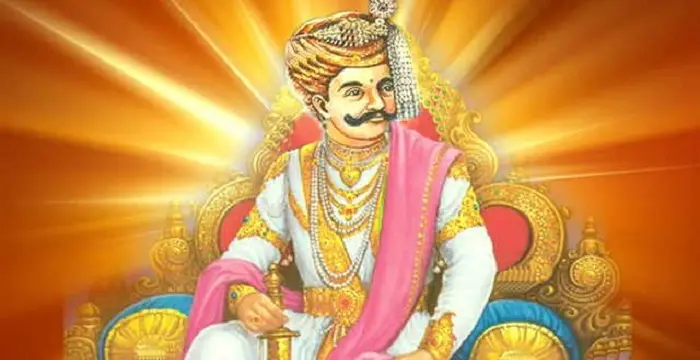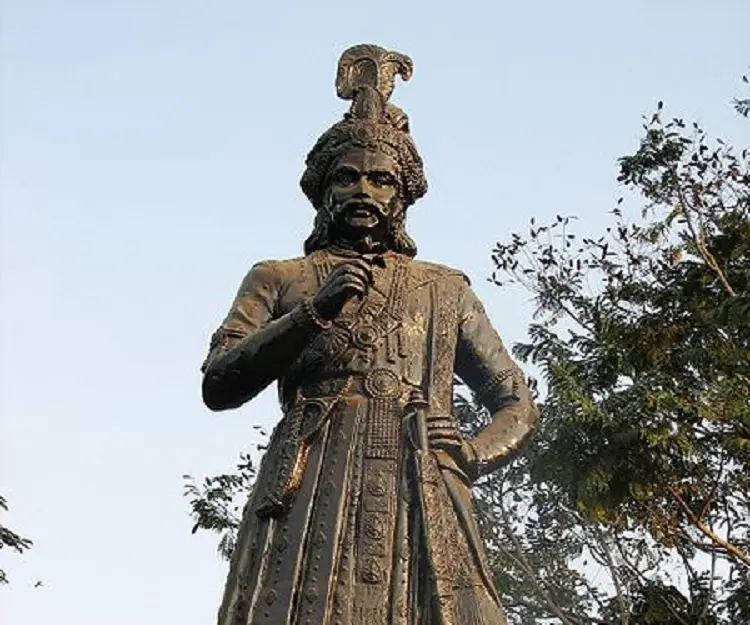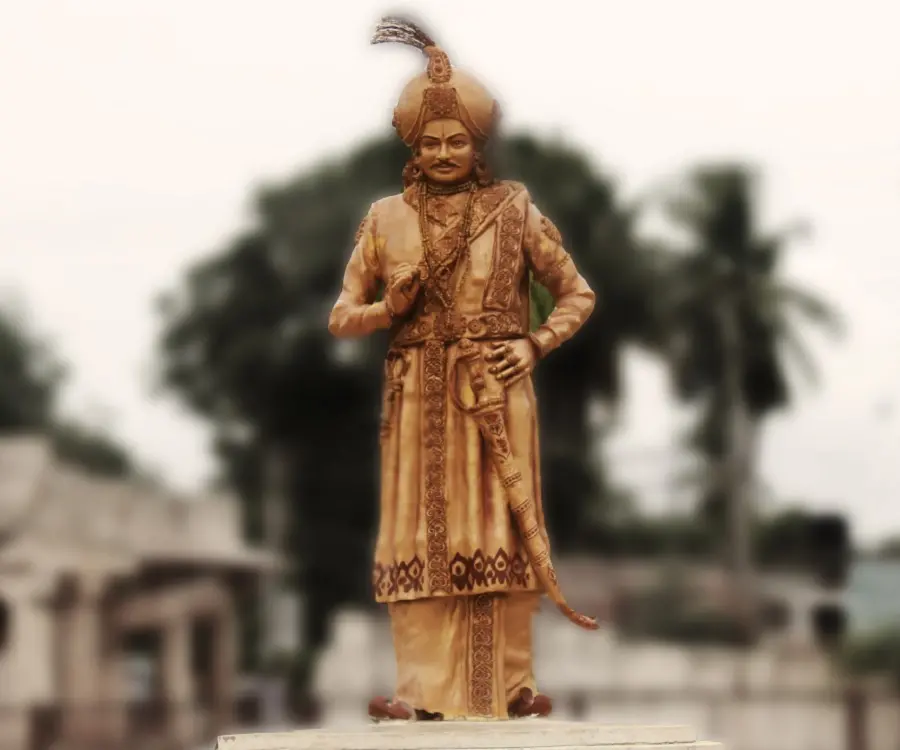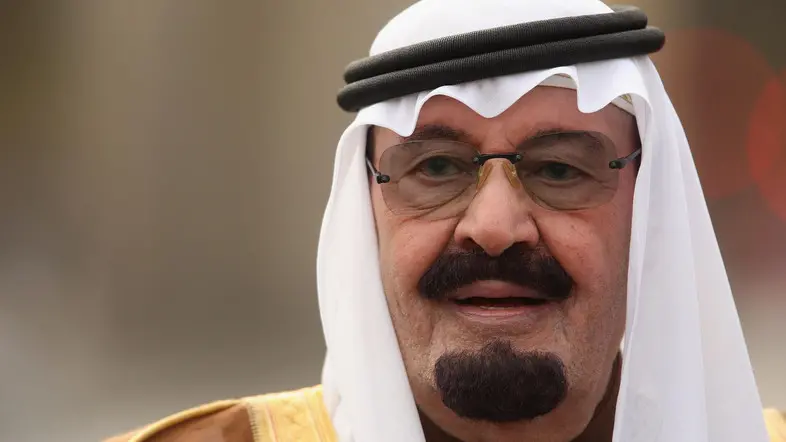
Krishnadevaraya - Kings, Birthday and Family
Krishnadevaraya's Personal Details
Krishnadevaraya was a prominent ruler of the Vijayanagara Empire of South India
| Information | Detail |
|---|---|
| Birthday | February 16, 1471 |
| Died on | January 1, 1529 |
| Nationality | Indian |
| Famous | Historical Personalities, Emperors & Kings, Emperor of the Vijayanagara Empire, Emperors, Kings |
| Siblings | Achyuta Deva Raya |
| Birth Place | Hampi |
| Religion | Hinduism |
| Gender | Male |
| Father | Tuluva Narasa Nayaka |
| Sun Sign | Aquarius |
| Born in | Hampi |
| Famous as | Emperor of the Vijayanagara Empire |
| Died at Age | 57 |
// Famous Emperors
Sundiata Keita
Sundiata Keita was the founder of the Mali Empire in West Africa. This biography profiles his childhood, early life, struggles, founding of empire, rule, administration, achievements and also gives some fun facts.
Ashoka
Ashoka was the third emperor of the Mauryan Dynasty and ruled almost the entire Indian subcontinent. This biography profiles his childhood, life, reign, achievements and timeline
Murad IV
Murad IV was one of the mighty Sultans in the history of the Ottoman Empire. This biography profiles his childhood, family, accession, rule, administration and timeline.
Krishnadevaraya's photo
Who is Krishnadevaraya?
Krishnadevaraya was a prominent ruler of the Vijayanagara Empire of South India. As the third ruler of the Tuluva Dynasty of the Vijayanagara Empire, he extended the empire to most of South India, which included present-day Karnataka, Northern Tamil Nadu and Andhra Pradesh, stretching upwards in the northeast to Cuttack. He ascended the throne during the most critical stage of the empire and went on to consolidate it as a flourishing empire. He played a major role in defeating the Bahmani Sultans and Portuguese, forcing them to retreat their plans of expanding their empire beyond their boundaries. Along with his prime minister and mentor, Timmarusu, he defeated the Bahmani Sutans, thereby conquering their fortresses of Bidar, Gulbarga, Raichur, and Bijapur. He led a major campaign against the Gajapatis of Odisha, following which he seized and captured the fortresses of Udayagiri, Kondavalli and Kondavidu. He is often compared with the greatest emperors of Asia and Europe, due to his brilliant achievements and exceptional ability to maintain political stability in the Deccan. By ruling the three most powerful territories in the southern peninsula of India, he was known by different titles, earned as a mark of respect, such as ‘Kannada Rajya Rama Ramana’ (Lord of the Kannada empire) and ‘Andhra Bhoja and ‘Mooru Rayara Ganda’ (King of three Kings).
Childhood & Early Life
Krishnadevaraya was born in 1471 in Hampi, Karnataka, to Tuluva Narasa Nayaka, an army commander under Saluva Narasimha Deva Raya, and Nagala Devi.
His father established the Tuluva Dynasty after the death of Saluva Narasimha to prevent it from splitting up.
Accession & Reign
He ascended the throne in 1509 and developed a strong relationship with the empire’s Prime Minister, Timmarusu, whom he looked upon as a fatherly figure.
He was crowned during the gloomiest period of the Vijayanagara Empire and hence, spent the first few years of his reign battling sieges and conquests to consolidate the kingdom.
Since the Portuguese dominated the sea trade along the Indian coastline, he developed friendly relations with them, following which he traded Arabian horses and guns from the Portuguese merchants.
He engaged Portuguese engineers in improving the supply of water in Vijayanagara City, apart from receiving arms and war materials for invading Raichur.
Following the defeat of the Sultan of Bijapur, Sultan Mahmud, in 1509 at his hands, towns and villages in Vijayanagar saved from annual raids by the Deccan sultans.
He annexed Raichur Doab and subsequently, raided Bidar, Gulbarga and Bijapur, thereby disintegrating the Bahmani Sultans, and took upon the title ‘establisher of the Yavana kingdom’.
By suppressing the local rulers, Reddys of Kondavidu and Velamas of Bhuvanagiri, he managed to conquer lands reaching the Krishna River.
In 1512, he defeated the Ummatur chief, Ganga Raja, to expand his empire – as a result of this defeat, the latter drowned in the waters of Cauvery River. The region was added to the Srirangapatna province.
Following his homage to Sri Venkateswara at Tirupati after his successful invasion of the Udayagiri Fort, he defeated the Gajapati army at Kondavidu and captured the fort after a series of initial routs, compelling the army to surrender.
While the fort was seized through a secret entrance discovered by Timmarusu, who was then appointed the governor of Kondavidu, the son of Prathapa Rudra, Prince Virabhadra, was captured and imprisoned.
As part of his third campaign in South India, he conquered Bezwada, on the banks of Krishna River, followed by the invasion of Kondapalli and forts in Nalgonda and Warangal.
Prathapa Rudra’s plan of crushing Krishnadevaraya and his army was crushed by his attack on the Gajapati Empire’s capital, Cuttack, forcing the former to surrender.
A treaty was signed in 1518, according to which the territories in the Odisha kingdom on the north of Krishna River were returned to the Gajapati ruler while maintaining complete peace between the two empires.
After completely thrashing the Bijapur army, he destroyed the fort of Gulbarga, the former Bahmani capital, though he reinstated the kingdom to Muhammad Shah.
By invading and conquering the different territories in the Bahmani kingdom, he succeeded in expanding his empire to South India.
Due to his high respect and support for art and Telugu literature, his reigning period came to be known as the golden age of Telugu literature, though Sanskrit, Kannada and Tamil literates were also patronized.
He appointed Ashtadiggajas, or eight poets, in his court – Pingali Surana, Nandi Thimmana, Dhurjati, Ramaraja Bhushanudu, Madayyagari Mallana, Tenali Rama Krishna, Ayyala-raju Rama-Bhadrudu, and most importantly Allasani Peddana.
Major Battles
He attacked the unconquerable Udayagiri Fort, ruled by Gajapati Prathapa Rudra Dev, in 1512 and after a year of continuous battles, the Gajapati army surrendered and escaped to Kondavidu.
The bloody battle of Raichur in 1520 saw over 703,000 foot soldiers, 32, 600 cavalry and 551 elephants fighting Ismail Adil Shah of Bijapur for the capture of its fortress leading to his defeat, amidst the death of 16,000 Vijayanagar soldiers.
Personal Life & Legacy
He was married to Tirumala Devi and Chinnama Devi.
He married Prathapa Rudra’s daughter, Princess Annapurna Devi, who became his third queen, as part of the peace treaty signed by the two rulers to establish peace and harmony on both sides of the Krishna River.
Being highly religious and devout follower of Lord Tirumala of Tirupati, he donated numerous precious objects to the Venkateswara Temple, including a jewel-studded golden sword and diamond-encrusted crowns.
In 1524, he pronounced his son, Tirumala Raya as the Yuvaraja but the crown prince didn’t live long to continue his father’s legacy and died, probably due to poisoning.
With Timmarusu’s son rumored to have poisoned his son, he got both Timmarusu and his son blinded.
He declared his half-brother Achyuta Deva Raya, as his successor and died in 1529, after falling ill critically.
// Famous Kings
Sundiata Keita
Sundiata Keita was the founder of the Mali Empire in West Africa. This biography profiles his childhood, early life, struggles, founding of empire, rule, administration, achievements and also gives some fun facts.
Ashoka
Ashoka was the third emperor of the Mauryan Dynasty and ruled almost the entire Indian subcontinent. This biography profiles his childhood, life, reign, achievements and timeline
Murad IV
Murad IV was one of the mighty Sultans in the history of the Ottoman Empire. This biography profiles his childhood, family, accession, rule, administration and timeline.
Krishnadevaraya biography timelines
- // 16th Feb 1471Krishnadevaraya was born in 1471 in Hampi, Karnataka, to Tuluva Narasa Nayaka, an army commander under Saluva Narasimha Deva Raya, and Nagala Devi.
- // 1509He ascended the throne in 1509 and developed a strong relationship with the empire’s Prime Minister, Timmarusu, whom he looked upon as a fatherly figure.
- // 1509Following the defeat of the Sultan of Bijapur, Sultan Mahmud, in 1509 at his hands, towns and villages in Vijayanagar saved from annual raids by the Deccan sultans.
- // 1512In 1512, he defeated the Ummatur chief, Ganga Raja, to expand his empire – as a result of this defeat, the latter drowned in the waters of Cauvery River. The region was added to the Srirangapatna province.
- // 1512He attacked the unconquerable Udayagiri Fort, ruled by Gajapati Prathapa Rudra Dev, in 1512 and after a year of continuous battles, the Gajapati army surrendered and escaped to Kondavidu.
- // 1518A treaty was signed in 1518, according to which the territories in the Odisha kingdom on the north of Krishna River were returned to the Gajapati ruler while maintaining complete peace between the two empires.
- // 1520The bloody battle of Raichur in 1520 saw over 703,000 foot soldiers, 32, 600 cavalry and 551 elephants fighting Ismail Adil Shah of Bijapur for the capture of its fortress leading to his defeat, amidst the death of 16,000 Vijayanagar soldiers.
- // 1524In 1524, he pronounced his son, Tirumala Raya as the Yuvaraja but the crown prince didn’t live long to continue his father’s legacy and died, probably due to poisoning.
- // 1529He declared his half-brother Achyuta Deva Raya, as his successor and died in 1529, after falling ill critically.
// Famous Emperors & Kings
Sundiata Keita
Sundiata Keita was the founder of the Mali Empire in West Africa. This biography profiles his childhood, early life, struggles, founding of empire, rule, administration, achievements and also gives some fun facts.
Ashoka
Ashoka was the third emperor of the Mauryan Dynasty and ruled almost the entire Indian subcontinent. This biography profiles his childhood, life, reign, achievements and timeline
Murad IV
Murad IV was one of the mighty Sultans in the history of the Ottoman Empire. This biography profiles his childhood, family, accession, rule, administration and timeline.
Xerxes I
Xerxes I (Xerxes the Great) was the fourth and the most famous king of the Archaemenid dynasty of Persia. This biography profiles his childhood, family, personal life, life history, achievements, campaigns, administration, death and other facts.
Sargon of Akkad
Sargon of Akkad, also called ‘Sargon the Great’, ‘Sarru-Kan’ and ‘Shar-Gani-Sharri’, was the founder and first king of the Akkadian Empire. This biography profiles his childhood, life, rule, administration, timeline, and gives some fun facts.
Abdullah of Saudi Arabia
Abdullah bin Abdulaziz Al Saud was the King of Saudi Arabia from 2005 to 2015 and the third wealthiest head of state in the world. Find more facts about his life, childhood and timeline.
Krishnadevaraya's FAQ
What is Krishnadevaraya birthday?
Krishnadevaraya was born at 1471-02-16
When was Krishnadevaraya died?
Krishnadevaraya was died at 1529-01-01
Which age was Krishnadevaraya died?
Krishnadevaraya was died at age 57
Where is Krishnadevaraya's birth place?
Krishnadevaraya was born in Hampi
What is Krishnadevaraya nationalities?
Krishnadevaraya's nationalities is Indian
Who is Krishnadevaraya siblings?
Krishnadevaraya's siblings is Achyuta Deva Raya
What is Krishnadevaraya's religion?
Krishnadevaraya's religion is Hinduism
Who is Krishnadevaraya's father?
Krishnadevaraya's father is Tuluva Narasa Nayaka
What is Krishnadevaraya's sun sign?
Krishnadevaraya is Aquarius
How famous is Krishnadevaraya?
Krishnadevaraya is famouse as Emperor of the Vijayanagara Empire







